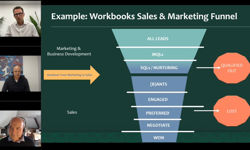It’s always been said that where consumer eyeballs go, adspend follows. But while British people are increasingly connecting to the content and brands they love on mobile devices, publishers and advertisers are still grappling with how best to turn consumer engagement into effective ad investment – without damaging print revenue.
Under-achieving on mobile
More than 58 per cent of Brits own a smartphone and, even before the Christmas tablet-buying spree, tablet penetration was just under 20 per cent. This is manna from heaven for print publishers, who are finding they can deepen relationships with people who are already readers, and reach new audiences with digital editions. The Association of Online Publishers recently found that 87 per cent of publishers get at least 10 per cent of their traffic from mobile, and a third get 20 per cent via mobile. Yet advertising investment lags some way behind consumer usage of mobile and tablet-based interactive magazines and apps. Only 29 per cent of publishers generate more than 5 per cent of digital revenues from mobile.
“It’s been a bumpy ride, certainly, and we kind of expected that the market would by now be a lot more mature than it has been,” says James Ranson, sales director at Future Publishing. The launch of Apple Newsstand was expected to mark the start of a new era in online publishing – and ad revenue generation. “I suppose we all thought that would be the time when tablet advertising would take off, and to an extent it has, but maybe not to the level we expected.”
(Pictured above, from left: James Ranson, Tim Faircliff, Rupert Turnbull, Jon Kitchen, Duncan Tickell.)
Tim Faircliff, former chairman of the AOP and an industry consultant, says questions about the value of a mobile or tablet reader compared to a print reader or computer-based reader remain unanswered, making it hard to put a value on what these audiences are worth to advertisers. Is someone more loyal to a brand and more likely to read repeatedly if they’ve paid for a magazine app? Do they engage more deeply with ads that have an interactive element that even the most beautiful print ad can’t replicate?
“With any sort of relatively new format, I guess publishers are looking for the usual data story to say ‘if you give me £100, you’ll get £300 back’. But there’s not a lot of data to back up what’s working or not, although the industry is taking steps to refine the data to provide the necessary transparency,” he says.
Interactive vs Static
Research carried out last year by Kantar Media Custom for News International compared the impact of ads carried in the print edition of the Times, compared to those in the iPad edition. It found that while a full-page print ad was considered equally as eye-catching as an interactive iPad app, the content-rich iPad advertising was considered more likeable, entertaining and informative. Static iPad advertising, however, was less attractive than a dramatic full-page print ad.
Ranson says one of the big conundrums for advertisers and their agencies is in deciding whether iPad advertising is going to be treated and bought like press advertising or more like other digital. “Generally speaking, within the agencies, it’s seen more like press, and they bring their own metrics to it,” he says. A broad understanding about how consumers use iPads – and what advertisers can do with them – has been somewhat lacking, but is starting to gather momentum. The next challenge is putting a monetary figure on that. “It’s about immersing a consumer in a brand and allowing them to engage with it, through videos and galleries. Look at how long we can get someone to sit with the device in their hand and play with your brand. Then it’s about what value you put on that. It doesn’t fit into a spreadsheet, and it’s not about click-throughs or absolute numbers.”
The AOP’s annual Content and Trends Census for 2012 identified the small size of the tablet audience and agencies’ attitudes to handheld tech as the two main barriers to revenue generation from mobile and tablets. How best to sell space in mobile and tablet apps - and for how much – is a long way from becoming clear; individual publishers are experimenting with different approaches and business structures.
A linear experience?
At Wired, publisher Rupert Turnbull says producing digital magazines on tablet is aimed at creating a seamless experience for the user across all platforms. “We don’t differentiate between print and digital. We just see it as the magazine,” he says. “It does seem to be the case from our research that people are reading our magazine on tablets in the same way as they’ve always read it – in a linear way. It’s designed to be read that way, there’s a narrative flow to it and that does seem to be continuing. So, when advertisers buy an ad in Wired or GQ, say, it goes in both print and digital editions; with the increased audience that the extra medium brings comes a proportional increase in page yields. The bigger readership means charging more for a simple display ad. “We think it’s a great opportunity,” says Turnbull. “There are a lot of publishers out there desperately wringing their hands and defending print shares to the hilt - forgetting they’re actually a content company.”
Further incremental revenue comes from charging for hi-tech links that make the most of what tablets can do. Simple links come at £1,000 each, and multi-media packages that build in video, animation or photo galleries can be added in for £3,000 or £6,000, depending on the file sizes involved.
A separate news app that’s free to consumers is available for brand ‘skinning’ by a single sponsor who signs up for three months at a time. The app has had 200,000 downloads; others are in the pipeline. Turnbull says advertisers have quickly got used to thinking about tablets as part of the mix; the challenge is that multiple copy has to be produced for different types of devices – iPad, Kindle, iPad mini, Google Nexus and others – and that can be an expensive deterrent.
Getting noticed
Stand-alone apps that don’t draw on the brand of a print title have more of a battle to be noticed. Apple's App Store alone has more than 775,000 apps – unless an app carries a well-known name that people are likely to be searching for, discovery outside the top 25 or 50 apps is difficult. In fact, tech title iGIZMO, a pure-play iPad launch without a sister edition in print, has been discontinued. More spectacularly, Rupert Murdoch in December shut his iPad newspaper, the Daily, having reportedly achieved only a fifth of the subscriber base it needed to be viable in nearly two years since launch.
Jon Kitchen is head of the emerging platforms team at Dennis. They’ve found success so far in selling space in interactive apps, but are providing space in tablet-based replicas of print editions without any extra charge to advertisers. Within apps – that for the Week has been especially successful – clients buy a pre-determined space in a set position and pay for that space in much the same way as they would if they were buying a print ad. Kitchen says advertisers pay a premium for the app environment because of the long dwell times involved in tablet reading and the depth of consumer engagement. He says analytics can track the number of active users and what they do when they’re online, but apps are often used offline; the number of overall app downloads is not really relevant.
“There’s more of an appetite; it’s becoming part of the media mix. The sale is really involved; you’ve got to not only understand the platform but also help create the ad,” he says. At Dennis, a central team for sales on interactive iPad magazines works with the commercial teams across titles, rather than having each brand working in isolation.
Future is also giving iPad space in flat replica editions free to advertisers already buying print space, and charging extra for enhanced, interactive ads. They, too, are working across titles to provide the kind of scale that appeals to agencies across target audiences rather than in individual magazines. Ranson says it’s possible now to buy iPad space aimed at affluent men reading lifestyle titles in the Future stable. It’s also possible to take out an iPad-only campaign, but this is rare.
“It’s for us to get in the market and explain where the iPad fits and what its use is,” Ranson says. “It may not fit every campaign type. If it’s a direct-response campaign then maybe a flat replica ad that you just click through is the best fit. If it’s more of an experiential branding campaign where you want people to engage with your brand, then you might need videos, 360s and galleries.”
Horses for courses
While interactivity works well with the audience – and advertisers – in a tech title such as T3, Ranson says the plan is not to give all titles the same quota of fancy extras. A cross-stitch title, for instance, isn’t a natural match with everything that a tablet is capable of doing. “We originally came into this whole game thinking everyone would want an enhanced version… but a lot of people just want a magazine reading experience on a different platform. They don’t want all the whizzy stuff.”
Duncan Tickell, commercial director at Immediate Media Co, says ads will gradually become a core part of tablet revenues. The recent cross-title deal with Silver Spoon, ‘Bake with the Best’, will run across print and iPad editions of Good Food, and in Olive, Delicious, Easy Cook, Gardeners’ World and Radio Times. Each title will feature different recipes, and there’ll be ‘how to’ advertorials, with all activity driving traffic to BakingMad.com.
“It’s still early days in the evolution of advertising in mobile and tablet apps, so like the rest of the industry, we’re still in learning mode,” Tickell says. “Early results are very positive with high levels of reader engagement and strong demand from advertisers for the rich solutions we can offer on our Top Gear and Good Food interactive editions. “Given the format is particularly suited to delivering highly-engaging ads that can include reader interactivity, audio and video, we are finding it increasingly plays a key role in integrated, cross-media campaigns.”
There’s broad agreement that rising revenues from tablet editions are not cannibalising profits from print. “We’re not seeing that drift from one to the other,” says Ranson. “Titles are specific brands in vertical markets so it’s more about finding additional revenue rather than switching one out from the other.”
At Condé Nast, which has a substantial events business, does consulting and is also in education, Wired’s Turnbull says: “We’re diversifying very rapidly. I really can’t predict where it’s going to end up, but the thing about digital is you can experiment relatively cheaply.”












